When I first visited Italy years ago, I spent all my time at the famous castles that fill guidebooks and Instagram feeds. But on my recent trip through the Aosta Valley, I stumbled upon Fénis Castle – a medieval gem that instantly captured my heart in ways the more famous Italian fortresses never did.
Unlike many Italian castles built on strategic peaks for military purposes, Fénis Castle sits on a modest hillock and served primarily as the administrative center and noble residence of the powerful Challant family.
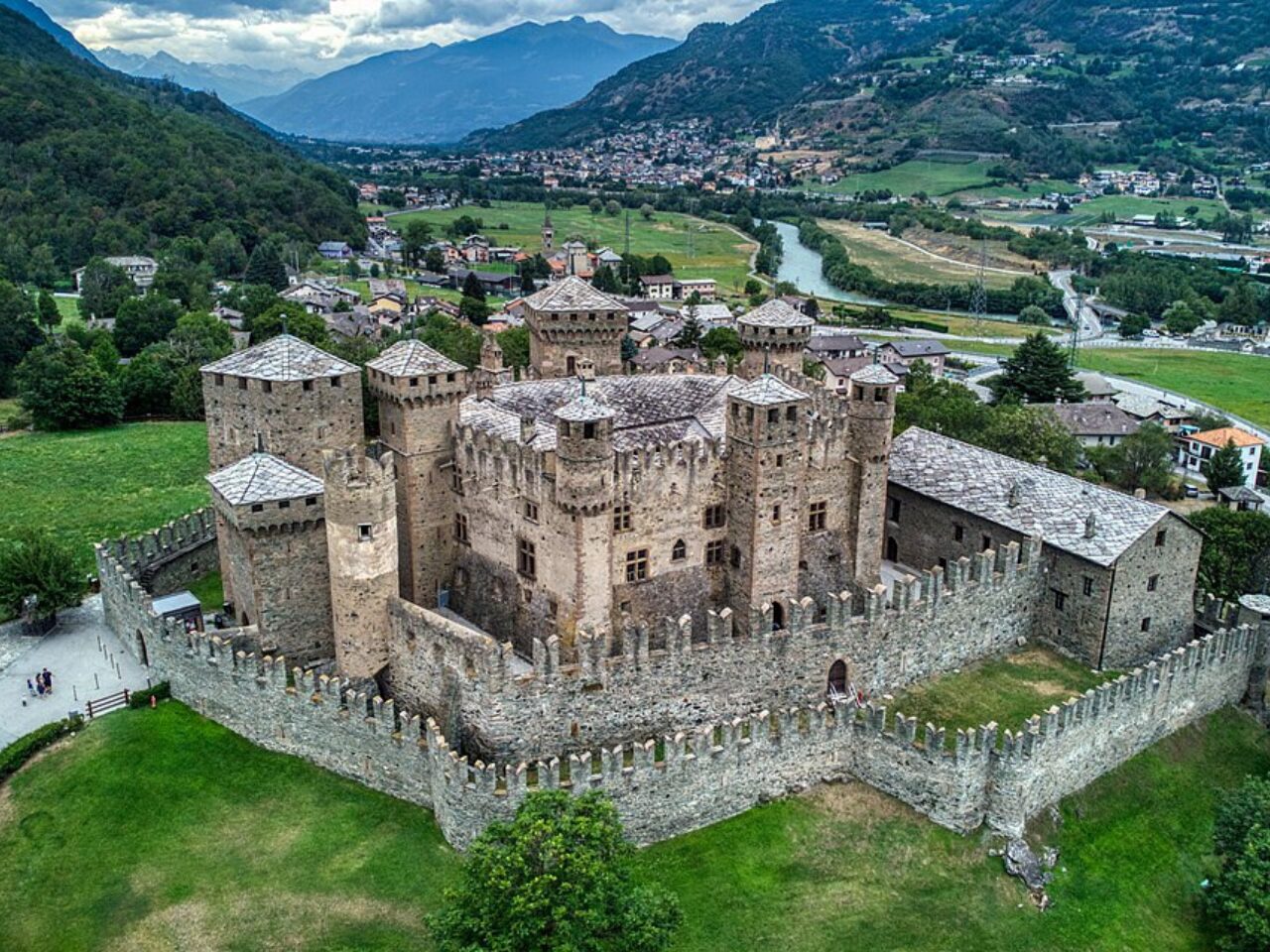
The castle’s unique charm lies in its perfect blend of practicality and beauty. Walking through its battlemented walls and admiring the multiple towers, I was struck by how different it felt from other Italian castles I’d visited.
Inside, the Gothic-style pictorial cycles are some of the most remarkable in Northern Italy – artwork that tells stories of privilege and power in medieval times.
What makes Fénis so special is the feeling of discovering something authentic that many tourists miss while chasing the more famous Italian landmarks. The castle offers a glimpse into actual noble life rather than just military history.
Each room whispered stories of the daily activities of the Challant family, making medieval life feel suddenly accessible and real in a way that larger, more tourist-heavy castles often fail to achieve.
A Journey to the Heart of Aosta Valley
Tucked away in the northwestern corner of Italy, the Aosta Valley captivated me with its stunning mountain scenery and medieval treasures. This alpine region holds secrets that many travelers miss while rushing between Italy’s more famous destinations.
The Allure of Alpine Landscapes
The drive through Aosta Valley feels like entering a fairy tale. Majestic mountains cradle small villages, with Mont Blanc standing guard over the region.
In spring, wildflowers carpet the meadows in vibrant colors that contrast beautifully with the snow-capped peaks.
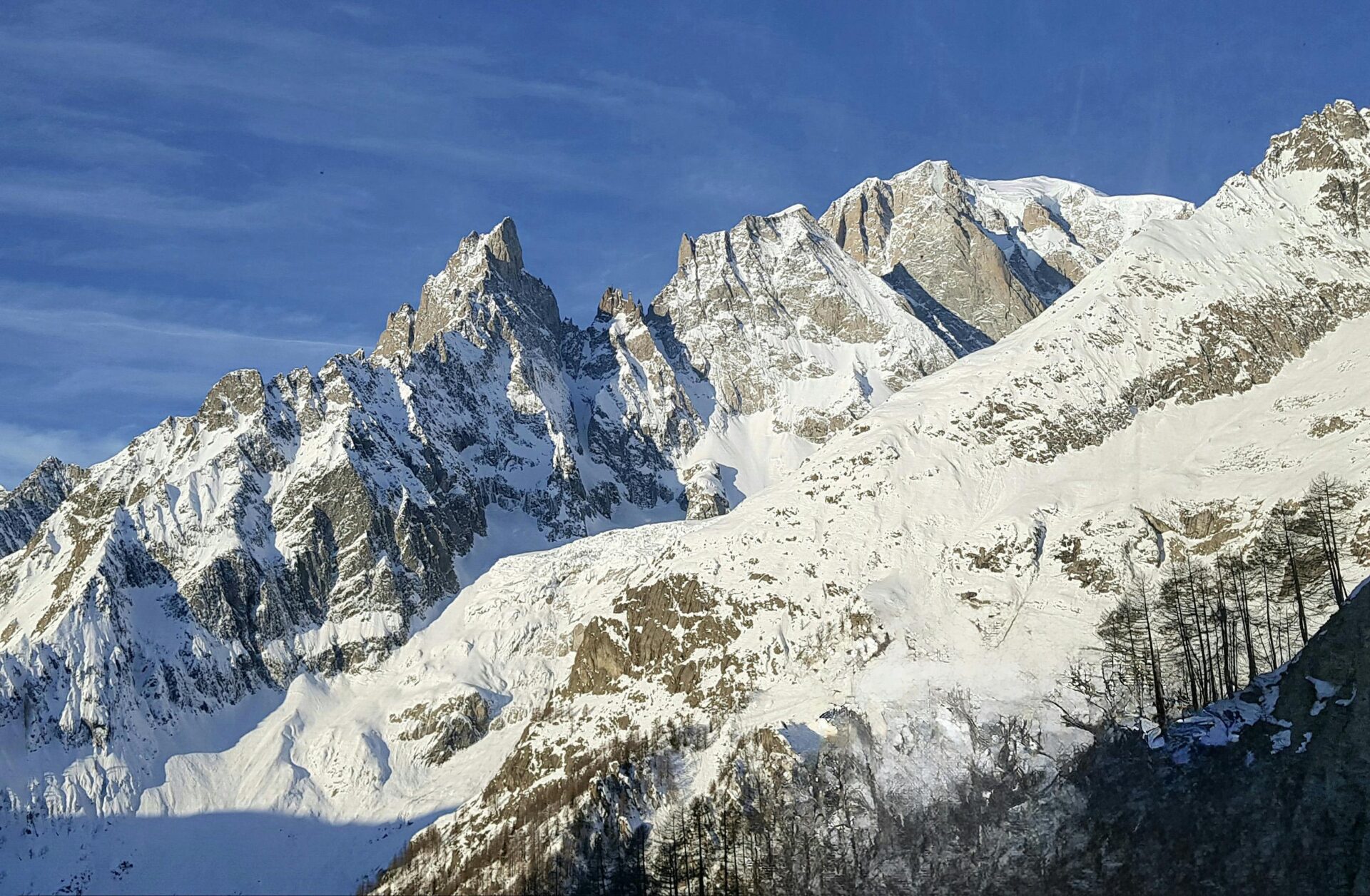
The valley’s unique position at the crossroads of Italy, France, and Switzerland gives it a distinct cultural blend. I noticed this in everything from the architecture to the regional dialect, which mixes Italian with French influences.
Local cuisine here deserves special mention. After hiking through alpine paths, I stopped at a small family-run restaurant for fontina cheese and hearty polenta – comfort food perfected over generations.
Unveiling Fénis Castle’s Charm
Fénis Castle appeared before me on a small hillock, not perched high like most defensive fortresses. This immediately hinted at its unique purpose as a prestigious residence rather than a military stronghold.
What struck me most was the castle’s perfect medieval silhouette. Its impressive crenelated walls and multiple towers create a postcard-worthy image against the mountain backdrop. Unlike many Italian castles, Fénis remains remarkably well-preserved.
Inside, Gothic frescoes commissioned by the powerful Challant family transport visitors back centuries. These pictorial cycles are among the finest in Northern Italy and tell stories of chivalry and noble life.
Walking through the castle’s courtyard with its elegant stone staircase, I felt the weight of history in a way I hadn’t experienced at Italy’s more touristy castles.
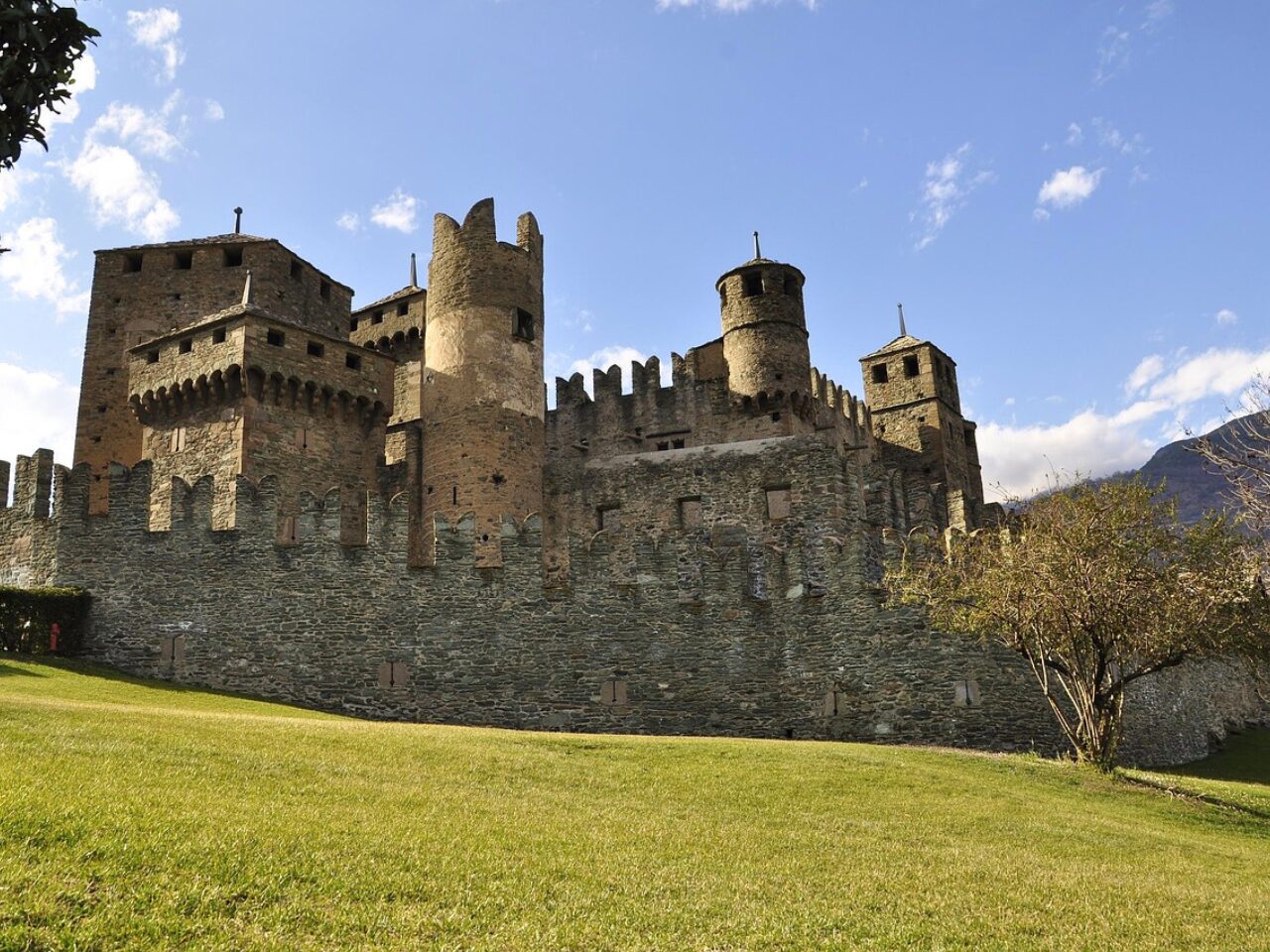
Historical Splendor of Fénis Castle
Fénis Castle captivated me from the moment I first glimpsed its medieval towers rising against the Aosta Valley landscape. Unlike many Italian fortresses built primarily for defense, Fénis served as both a noble residence and administrative center with remarkable artistic treasures hidden within its walls.
Architectural Marvels Through the Ages
The castle reached its greatest splendor under Boniface I of the Challant family, when it transformed from a simple fortress into a magnificent noble residence.
Walking through the grounds, I was amazed to discover it once featured vegetable plots, vineyards, and elegant gardens surrounding the main structure.
What makes Fénis truly special is its double defensive walls and numerous watchtowers that form a pentagon shape. The castle features a stunning central courtyard with a semi-circular stone staircase that I spent hours photographing from different angles.
Inside, I discovered some of Northern Italy’s most remarkable Gothic-style frescoes. These colorful wall paintings commissioned by the Challant family showcase medieval artistry at its finest.

The Noble Heritage of a Fortress
The powerful Challant family used Fénis not just as a military stronghold but as their administrative headquarters and noble residence. This dual purpose explains the castle’s unique blend of defensive features and comfortable living spaces.
Walking through the grand halls, I felt the presence of the lords who once ruled this fiefdom. The castle tells their story through its architecture and artistic elements, particularly in the famous fresco of St. George slaying the dragon.
What fascinated me most was how the castle served as a symbol of the family’s power and wealth in the Aosta Valley region. Unlike purely military fortresses, Fénis was designed to impress visitors and showcase the Challants’ status.
The castle remains one of the most famous landmarks in the entire Aosta Valley, preserving centuries of noble Italian heritage behind its imposing walls.
Experiencing Fénis Castle’s Unique Features
Fénis Castle captivated me with its perfect balance of defensive architecture and artistic beauty. The castle’s interior spaces and artwork tell stories that go far beyond what you might expect from its imposing exterior.
Beyond the Castle Walls: Interior Exploration
Walking through Fénis Castle’s entrance, I was immediately struck by the contrast between its fortress-like exterior and the surprisingly refined interior. The central courtyard features a semi-circular stone staircase that seems to float against the inner walls. This architectural marvel connects the various levels of the castle.
The great hall, where medieval lords once held court, still maintains its imposing atmosphere. I spent nearly an hour examining the intricate wooden ceilings and sturdy stone walls that have withstood centuries.
What fascinated me most was the castle’s clever defensive design. Arrow slits are positioned throughout, allowing defenders to protect the castle while remaining safely hidden. These practical elements exist alongside surprisingly comfortable living quarters.
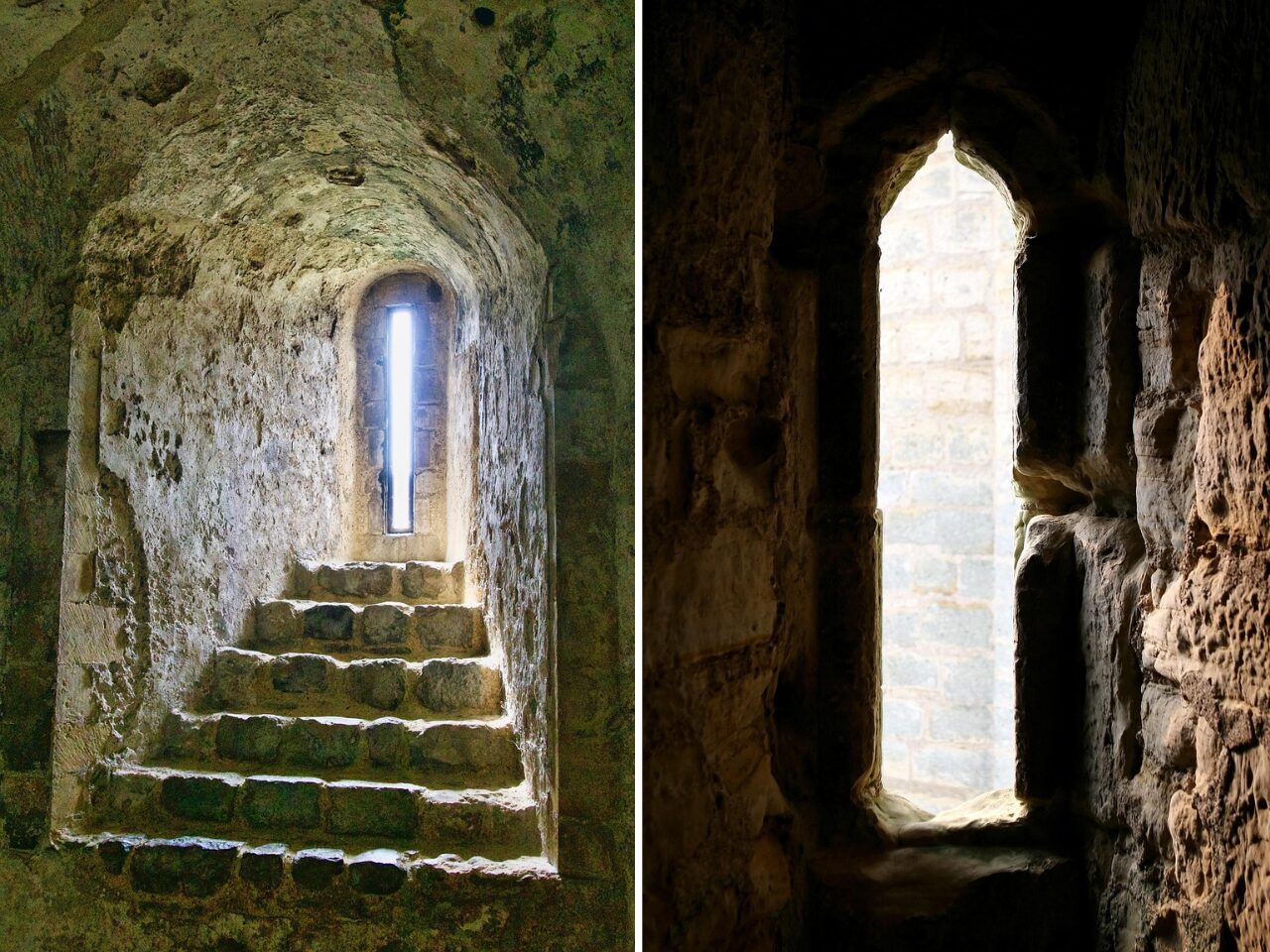
The Enigma of Medieval Frescoes
The frescoes decorating Fénis Castle’s walls were an unexpected highlight of my visit. In the courtyard, a stunning depiction of Saint George slaying the dragon caught my eye immediately. These colorful scenes have somehow survived centuries of Aosta Valley’s harsh weather.
Inside, more elaborate frescoes showcase scenes of medieval life and religious imagery. I was particularly drawn to the series of wise men and prophets that line the walls of the main hall. Their expressions seem to follow you as you move through the space.
The colors—rich blues, reds, and golds—remain surprisingly vibrant despite their age. According to my guide, many were created in the early 15th century, commissioned by the powerful Challant family who owned the castle.
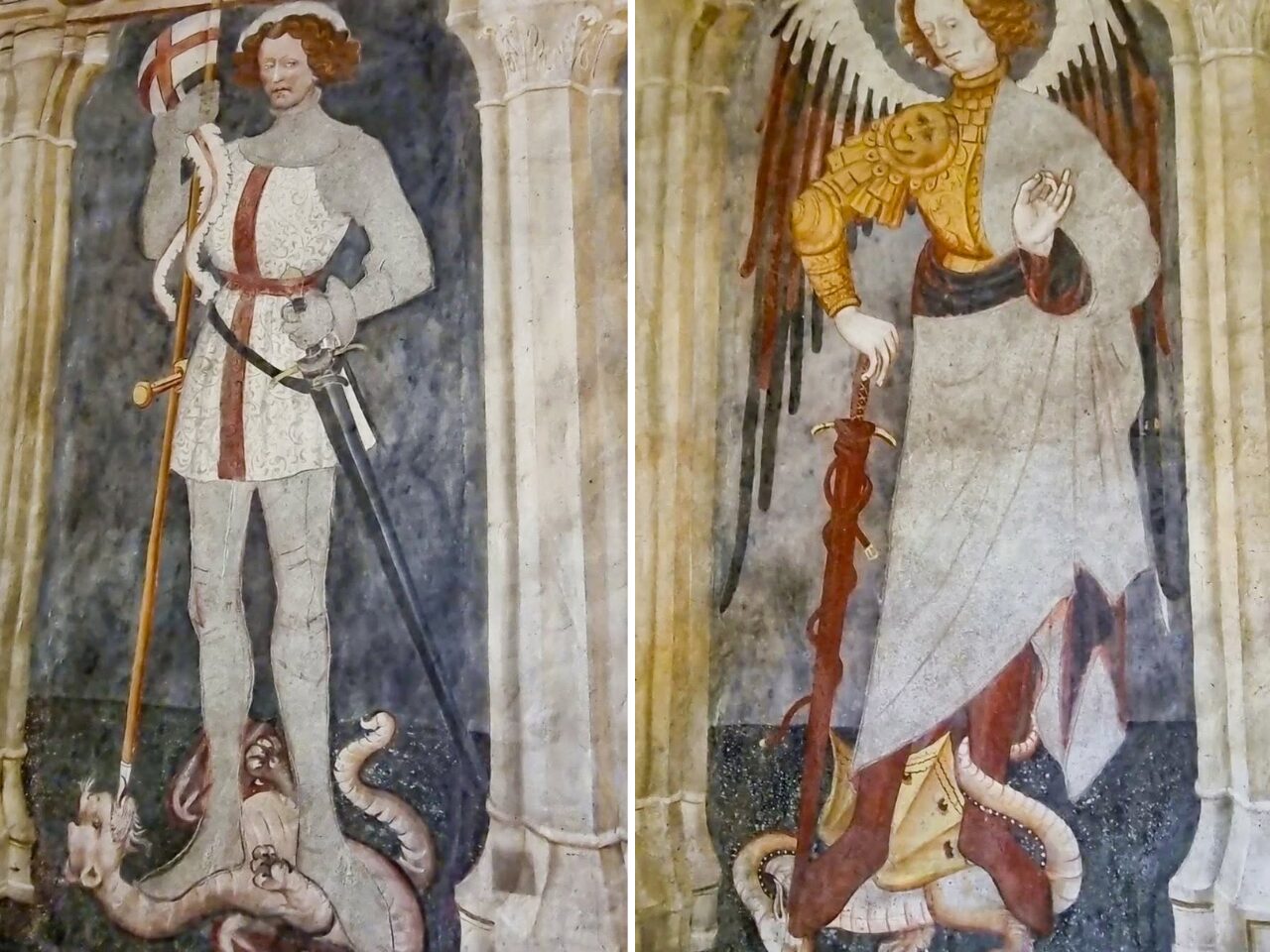
The Romance of Fénis Versus the Fame of Italian Rivals
While Italy boasts many celebrated castles that draw massive crowds, Fénis Castle in the Aosta Valley captivated my heart with its understated charm and authentic medieval character. Unlike its famous counterparts, Fénis offers a more intimate experience that connects visitors to the true essence of Italian nobility.
Embracing the Mystique Over Mainstream
I’ll admit I initially planned my Italian castle tour around the famous fortresses in Piedmont and Liguria. Those castles grace postcards and travel magazines for good reason. But stumbling upon Fénis Castle changed everything for me.
Unlike the tourist-packed famous castles, Fénis welcomed me with peaceful courtyards and the gentle echo of my footsteps. The lack of overwhelming crowds allowed me to truly absorb the medieval atmosphere.
What makes Fénis special is how it stands as a noble residence rather than just a defensive structure. The Challant family’s administrative seat feels like a place where real people lived, not just a military outpost.
The castle’s location in the stunning Aosta Valley adds to its charm, surrounded by alpine views that famous castles in more accessible regions simply can’t match.

Personal Touches That Elevate Fénis Castle
The architectural details at Fénis speak volumes about its character. The multiple towers and battlemented walls create a fairy-tale silhouette, but it’s the interior that truly shines.
Walking through the courtyards, I noticed beautiful frescoes that told stories of daily life. These artistic touches revealed that Fénis was more than a fortress—it was a home.
The semi-circular staircases adorned with Saint George slaying the dragon left me speechless. These personal touches felt authentic rather than designed for tourism.
When I visited, a local guide shared stories about the Challant family that brought the stones to life. These weren’t rehearsed tourist spiels but genuine regional pride.
The castle’s balance between defensive elements and residential luxury perfectly captures what makes it special. It’s not trying to be the biggest or most famous—it’s simply authentic to its purpose and history.
Practical Travel Tips for Future Visitors
Visiting Fénis Castle requires some planning to make the most of your experience. I’ve put together some practical advice from my recent trip to help you navigate this medieval gem.
Planning Your Itinerary
The castle is open year-round, but hours vary by season. During summer months (March-October), it’s open from 9 AM to 7 PM, while winter hours are shorter. I recommend arriving before 11 AM to avoid the midday crowds.
You’ll need about 1-2 hours to fully explore the castle. Tours are guided only and run every 30 minutes, with English tours available at specific times.
The entrance fee is €7 for adults, with discounts for seniors and students. I bought my tickets online a day before to skip the line.
From Aosta, it’s a 15-minute drive to Fénis. Public buses also run regularly from Aosta’s main station, taking about 25 minutes.
Accommodation and Local Delicacies
I stayed in a charming B&B just 5 minutes from the castle for €85 per night. The area around Fénis offers several small family-run hotels and agriturismo options. Prices range from €70-150.
For a splurge, I recommend the historic hotel where Queen Margherita once stayed in nearby Aosta. It offers amazing mountain views and old-world charm.
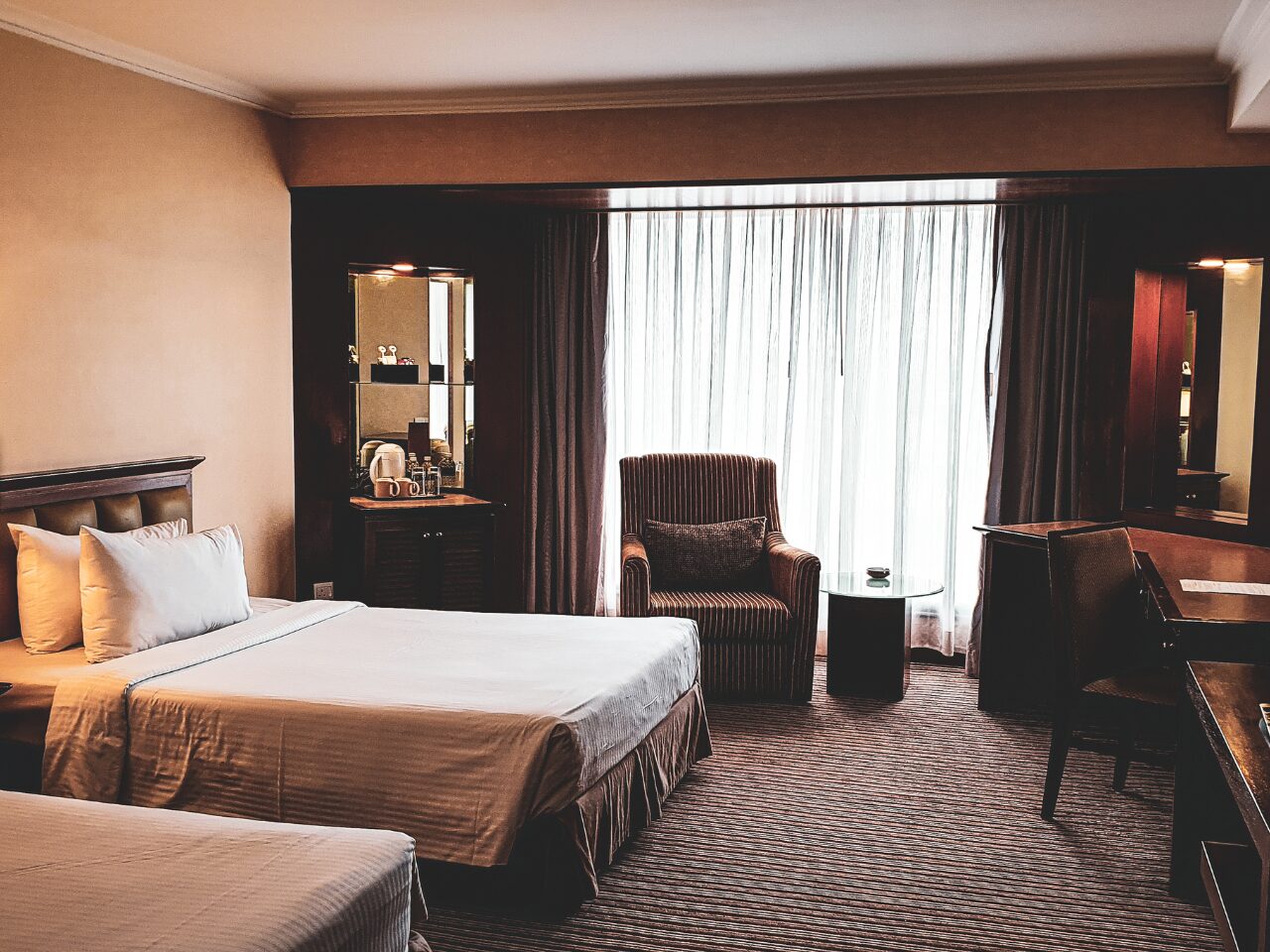
Don’t miss trying the local Valdostana cuisine! The fontina cheese and polenta concia were highlights of my trip. Restaurant Taverna del Castello serves authentic regional dishes at reasonable prices.
If you have an extra day, take a drive to coastal Lerici for a complete contrast to the mountain scenery. The seafood there perfectly complements the hearty Alpine fare from Fénis.

